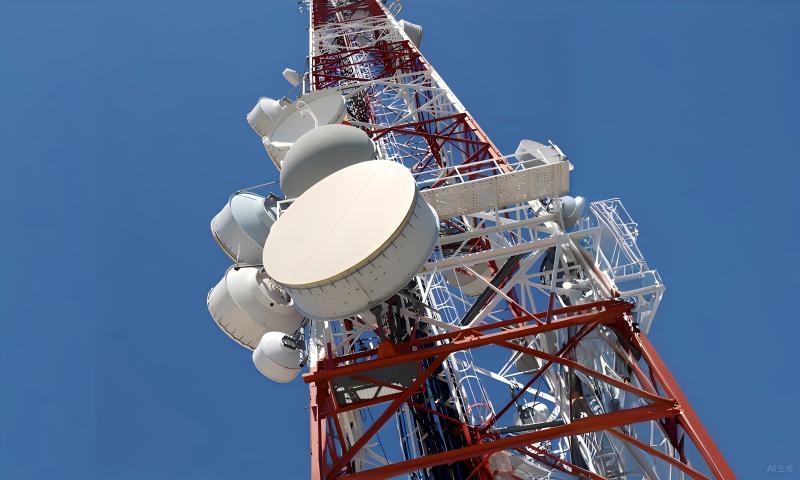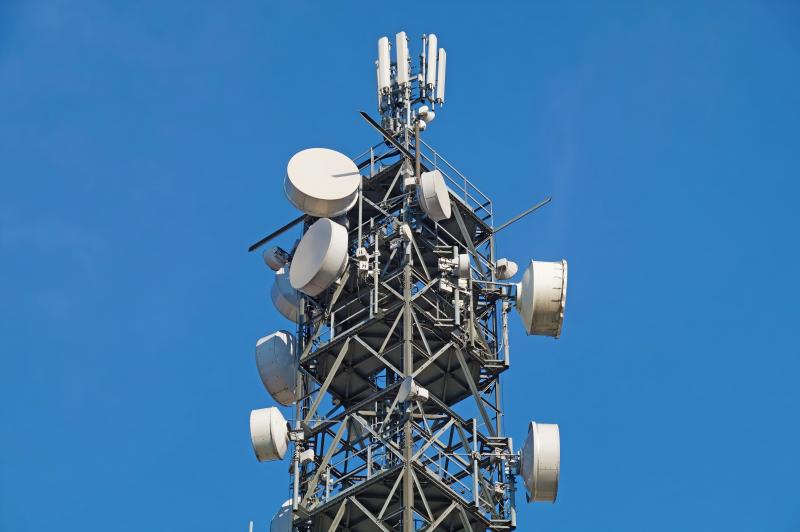مقدمة:
أبراج الاتصالات الفولاذية الزاوية
تُشكّل الأبراج الفولاذية الزاوية العمود الفقري لشبكات الاتصالات الحديثة، حيث تدعم الهوائيات وأجهزة الإرسال والاستقبال التي تُبقي العالم متصلاً. ومع ذلك، تواجه هذه الهياكل تحدياتٍ لا هوادة فيها، منها قسوة الطقس، والبيئات المسببة للتآكل، وعقود من متطلبات الخدمة. يكمن سرّ طول عمرها في مزيجٍ هندسيٍّ دقيقٍ يجمع بين علم المواد، والتصنيع المتطور، والصيانة الاستباقية. في هذه المدونة، نكشف النقاب عن الاستراتيجيات التقنية التي تضمن بقاء أبراج الفولاذ الزاوية شامخةً لأجيال.

تبدأ رحلة المتانة باختيار الفولاذ المناسب. فليس كل الفولاذ متساويًا:
الفولاذ عالي القوة ومنخفض السبائك (HSLA): توفر الدرجات مثل Q345B (الصين) أو ASTM A572 (الدولية) نسب قوة إلى وزن متفوقة ومقاومة للتآكل الجوي.
التكيف البيئي: في المناطق الساحلية أو الصناعية ذات الملوحة العالية أو التلوث، قد تكون الأولوية للصلب المقاوم للكبريت أو المواد المطلية بسبائك الألومنيوم والزنك.
معايير الجودة: الامتثال لمعايير ISO 1461 (الجلفنة بالغمس الساخن) وASTM A123 يضمن سلامة المواد منذ البداية.
نصيحة احترافية: أكثر من 70% من أعطال الأبراج ناجمة عن مواد رديئة الجودة. التعاون مع موردين معتمدين أمرٌ لا غنى عنه.
الجلفنة بالغمس الساخن (HDG) هي المعيار الذهبي لحماية الهياكل الفولاذية. والسبب:
طريقة العمل: يتم غمر المكونات الفولاذية في الزنك المنصهر عند درجة حرارة 450 درجة مئوية، مما يشكل رابطة معدنية تخلق حاجزًا ضد الرطوبة والأكسجين.
الفوائد: يمكن لطلاء HDG بسمك 100 ميكرومتر أن يوفر أكثر من 50 عامًا من الحماية في البيئات المعتدلة، مع خصائص الشفاء الذاتي للخدوش البسيطة.
مراقبة الجودة: يتم اختبار سمك الطلاء، والالتصاق، والتوحيد بدقة باستخدام مقاييس مغناطيسية واختبارات القطع المتقاطع.
بالنسبة للبيئات القاسية، تضيف الطلاءات التكميلية طبقة إضافية من الأمان:
برايمرات الإيبوكسي: يتم تطبيقها قبل الجلفنة، فهي تعمل على تعزيز الالتصاق وملء المسام المجهرية في طبقة الزنك.
طبقات البولي يوريثين العلوية: تمنع الطبقات المقاومة للأشعة فوق البنفسجية ظهور الطباشير والبهتان في الصحاري أو المناخات الاستوائية.
الحماية الكاثودية: بالنسبة للأبراج الموجودة في المناطق الساحلية، يتم تركيب الأنودات القربانية (مثل الزنك أو المغنيسيوم) لتحويل التآكل بعيدًا عن المفاصل الحرجة.
دراسة حالة: تمكن برج في صحراء الربع الخالي بالمملكة العربية السعودية من الصمود لمدة 15 عامًا في مواجهة العواصف الرملية ودرجة حرارة تصل إلى 50 درجة مئوية باستخدام نظام هجين من البولي يوريثين عالي الكثافة.
4. استراتيجيات الصيانة: إطالة عمر البرج
التفتيش نصف السنوي: استخدم الطائرات بدون طيار وأجهزة الاستشعار بالموجات فوق الصوتية للكشف عن الشقوق أو تدهور الطلاء أو بقع الصدأ.
بروتوكولات التنظيف: إزالة رواسب الملح، وفضلات الطيور، والحطام الذي يحبس الرطوبة.
مجموعات التلميع: حلول سريعة لإصلاح الطلاء التالف، مثل الدهانات الغنية بالزنك أو مركبات الجلفنة الباردة.
البيانات في الوقت الفعلي: تتبع أجهزة الاستشعار المدمجة معدلات التآكل والإجهاد والعوامل البيئية (الرطوبة، الرقم الهيدروجيني).
التحليلات التنبؤية: تتنبأ خوارزميات الذكاء الاصطناعي باحتياجات الصيانة، مما يقلل وقت التوقف بنسبة تصل إلى 40%.

لمعرفة المزيد، تفضل بزيارة www.alttower.com